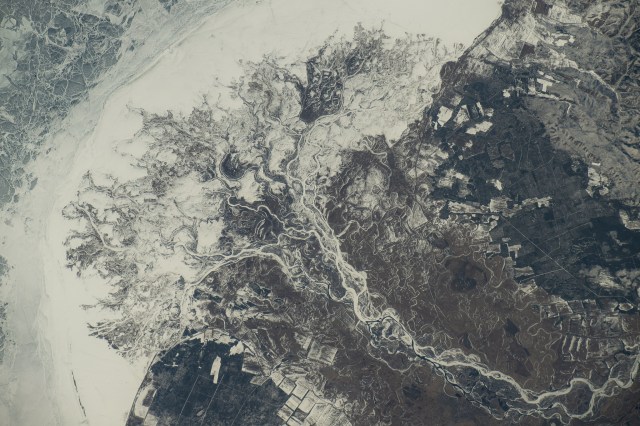
The New Horizons Long Range Reconnaissance Imager (LORRI) took this 2-millisecond exposure of Jupiter at 04:41:04 UTC on Jan. 24, 2007. The spacecraft was 57 million kilometers (35.3 million miles) from Jupiter, closing in on the giant planet at 41,500 miles (66,790 kilometers) per hour. At right are the moons Io (bottom) and Ganymede; Ganymede’s shadow creeps toward the top of Jupiter’s northern hemisphere.
Two of Jupiter’s largest storms are visible; the Great Red Spot on the western (left) limb of the planet, trailing the Little Red Spot on the eastern limb, at slightly lower latitude. The Great Red Spot is a 300-year old storm more than twice the size of Earth. The Little Red Spot, which formed over the past decade from the merging of three smaller storms, is about half the size of its older and “greater” counterpart.Image credit: NASA/Johns Hopkins University Applied Physics Laboratory/Southwest Research Institute
























